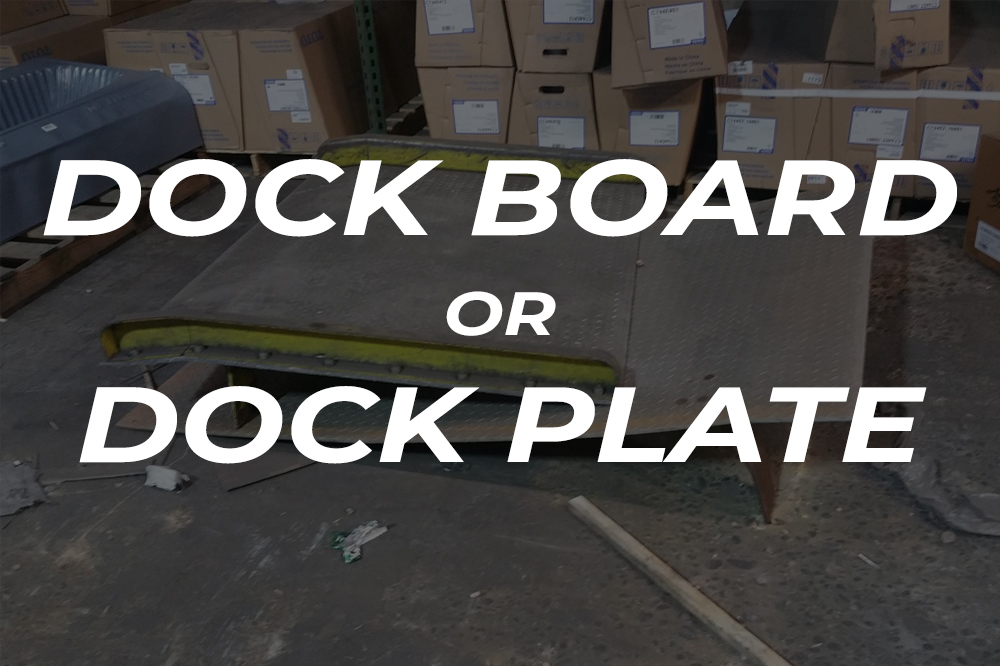-
Home
-
Choosing the Right Used Dock Board or Dock Plate

Choosing the Right Used Dock Board or Dock Plate
September 19, 2013
Dock boards and dock plates are a portable solution to bridging the gap from the edge of a dock to an open truck bed. This can be a problem because trucks vary in height, so there is a gap and a height difference to consider. Both styles come in varying capacities that allow for anything from foot travel to lift equipment.
The major difference between dock plates and dock boards is capacity. They are similar in design and look except that dock plates are typically made out of aluminum, but heavier duty models are made of steel, and they allow for lighter loads.
Hand carts and pallet jacks are used with dock plates, but forklifts and other lift equipment is too heavy. The capacity ranges from around 1,500 to 5,500 lbs., and they contain a 10 degree bend to allow it to be flush with the dock and the truck during loading and unloading. Dock plates have no guide rails, but dock boards do; and both types have skid-resistant surfaces to ensure safety. Other permanent dock equipment includes dock levelers and lifts, which are generally secured permanently at each dock opening.
Dock plates also do not contain guide rails, which is typical because they are only supporting foot traffic, warehouse carts, or pallet jacks (manual and electric). Usually the sides of a dock plate have brightly colored tape or spray to prevent injury due to run-off.
Dock boards are made of steel and have side rails to prevent pallet jacks and forklifts from falling off. Their decking is made of diamond pattern flooring to prevent lift equipment wheels from sliding when traveling on an incline. Capacities range from 5,000 lbs to 30,000 lbs, which is significantly higher.
Choosing the right dock equipment
Capacity is the most important factor to consider when deciding between a dock plate or dock board. The first question to consider is whether you will be using lift equipment to transport product out of the truck. This will automatically require a dock board due to capacity requirements and the need for side guard rails. To decide which capacity of dock board is required, add together the weight of the lift equipment and the maximum load weight of that equipment. So if your forklift weighs 7,000 lbs. and has a 4,000 lbs. capacity, you should consider a board that holds at least 11,000 lbs.
In manual applications, the width of the dock plate or dock board should be at least 8 inches wider than the overall width of the equipment. For powered operations, the width should be at least 16 inches wider than the overall width of the equipment.
The proper length is determined by the height difference between the loading dock and the floor of the truck. This equipment has a maximum height differential, so a longer board can accommodate a greater range of height differences. Exceeding this angle will potentially dislodge the safety leg holding it in place, allowing it to shift and become unstable.
Should I consider buying used? Used dock boards and dock plates are an extremely heavy-duty piece of equipment with no moving parts to maintain. The difference in functionality between a used and new dock equipment is non-existent, as they will both function exactly the same.
The difference worth considering is the price savings. New dock plates can cost between $300 and $800, while a used one from ASI can cost as little as $175. New dock boards start at around $1,000, while our used dock boards are sold at $595. This is almost a 50% price savings, and we can offer quantity discounts if the purchaser buys in bulk. If there is only a difference in price and not quality, why buy new if you can purchase used?